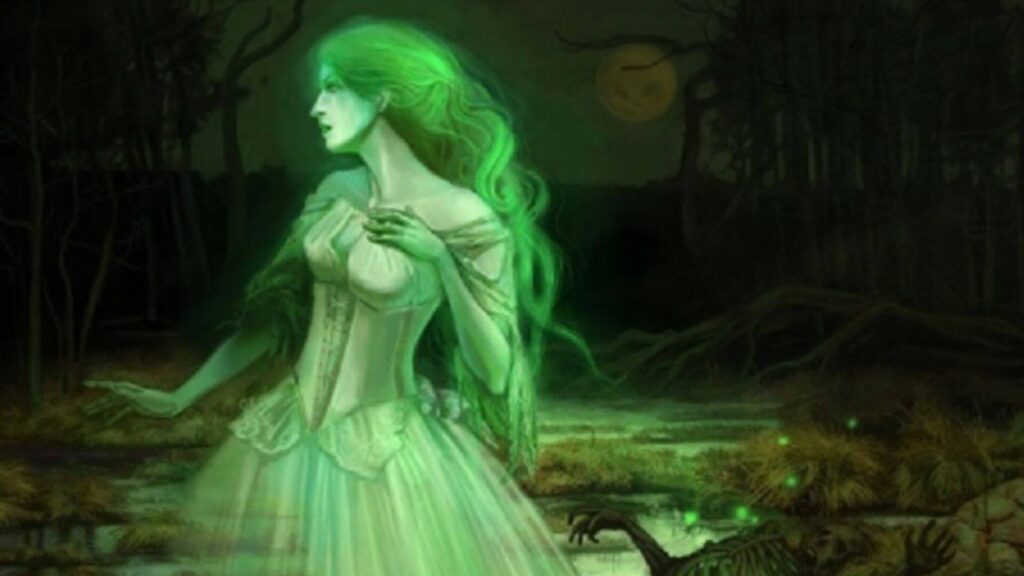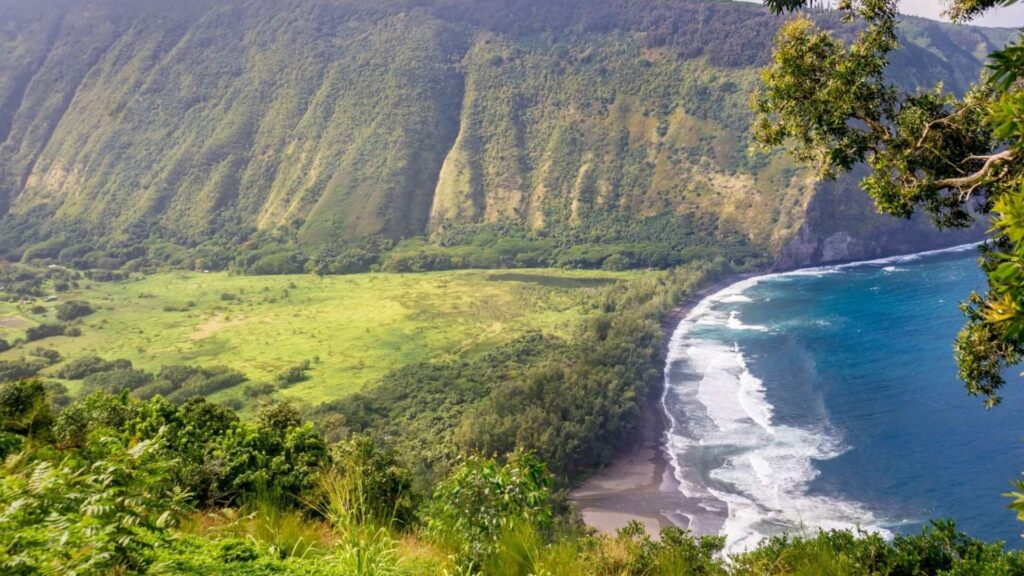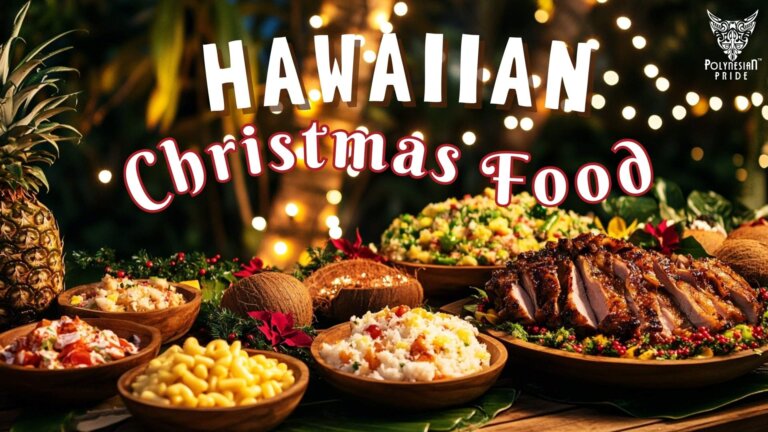17 Hawaiian Myths and Legends About Gods, Ghosts, and Love

INTRODUCTION
The enchanting beauty of Hawaii is matched only by the depth of its mythology. Hawaiian folklore is a tapestry woven from stories that embody the spiritual connection between the land and its people. From ancient warrior spirits to powerful goddesses, each narrative serves a purpose—whether to explain natural phenomena, provide moral guidance, or celebrate cultural heritage. Through exploring Hawaiian myths and legends, we learn about the past and gain a greater appreciation for their ongoing influence on contemporary Hawaiian culture.
Major Gods and Goddesses in Hawaiian Mythology
Hawaiian mythology is filled with deities that significantly shape the natural world, human destiny, and cultural practices. Each god or goddess has distinct attributes and stories about their power and personality.
1. Pele: The Fiery Goddess of Volcanoes

Pele is not just a deity of fire; she represents the very essence of creativity and destruction. Often portrayed as an older woman, she embodies wisdom gained through experience. Her temper, however, is feared as much as it is respected. She unleashes volcanic fury when angered, which can devastate landscapes and communities.
Pele’s complex character is reflected in her relationships, particularly with Kamapua’a, the hog god. Their tumultuous romance highlights themes of love, passion, and conflict, adding layers to her identity and showcasing the intricate connections between deities and the natural elements they govern.
People frequently leave offerings to Pele to seek her favor, demonstrating the belief that engaging with the divine can bring harmony and balance. These rituals emphasize gratitude and respect for the power of the land.
2. Māui: The Trickster Demigod

Māui is renowned for his cunning intelligence and playful spirit and is often regarded as a trickster figure in Hawaiian lore. His adventures—including slowing down the sun and fishing up islands—demonstrate his physical prowess and his cleverness in manipulating natural forces.
His legendary quest to steal fire for humanity exemplifies bravery and a desire to improve the lives of those around him. Through his escapades, Māui reveals the importance of ingenuity and resourcefulness—qualities valued in Hawaiian society.
Moreover, his stories are allegories for resilience and problem-solving, encouraging listeners to approach challenges creatively and boldly.
3. Lono: The God of Agriculture and Peace

Lono is associated with agriculture, fertility, and healing. He symbolizes abundance and is celebrated during festivals that promote agricultural prosperity. His presence signals a time of peace and renewal, aligning well with the cycles of planting and harvesting.
The temple built for him after a tumultuous storm reflects Hawaiians’ reverence for the natural elements that sustain their lives. Rituals dedicated to Lono often involve music, hula, and offerings, reinforcing the community’s bond with the land.
The duality of Lono as a peaceful provider yet capable of causing storms underscores the need for respect and balance in nature. Understanding Lono encourages a harmonious relationship with the environment, emphasizing sustainability and stewardship.
While myths focus on gods and spirits, they also reflect the daily lives and physical features of Native Hawaiians, shaping how identity is portrayed today.
4. Kāne and Kanaloa: The Gods of Creation and the Ocean

Kāne and Kanaloa represent complementary forces in Hawaiian cosmology. Kāne is associated with fresh water, creation, and light, while Kanaloa governs the ocean, darkness, and navigation. Together, they embody the duality crucial to life—land and sea, creation and dissolution.
Their narratives highlight the significance of water in Hawaiian culture, representing both sustenance and spiritual cleansing. Following their stories leads to a deeper understanding of Hawaiian existence’s natural cycles.
Through their intertwined legacies, Kāne and Kanaloa teach the values of balance and respect for nature’s vastness, reminding us of our place within it.
Legendary Figures and Heroes
Hawaiian mythology is replete with legendary figures who embody cultural values such as bravery, loyalty, and love. These heroes often serve as models for ethical behavior and social norms within the community.
5. Hiʻiaka: The Sister of Pele

Hiʻiaka, the beloved sister of Pele, is a central figure in Hawaiian mythology known for her strength and devotion. Her journey to fetch her sister’s lover’s heart showcases her unwavering loyalty and courage as she faces numerous trials in the Waipiʻo Valley.
Her story intersects with various aspects of Hawaiian culture, including the significance of hula, which she promotes as a form of storytelling and reverence for the gods. Hiʻiaka’s adventures symbolize resilience and the importance of family bonds, resonating with the values cherished in Hawaiian society.
As a cultural hero, Hiʻiaka teaches lessons about sacrifice and perseverance, encouraging individuals to navigate life’s challenges with grace and determination.
6. The Menehune: The Mysterious Little People

The Menehune are tiny, mythical beings said to inhabit the lush forests and remote areas of Hawaii. Known for their remarkable craftsmanship, they constructed impressive structures overnight, such as fishponds and temples, showcasing their skills and ingenuity.
These little people are often depicted as playful tricksters, occasionally mischievous toward those who encroach upon their territory. Stories about the Menehune reflect a deep-seated respect for the land and its original inhabitants, emphasizing the necessity of coexistence with nature.
Engaging with the lore of the Menehune invites reflection on environmental conservation and the preservation of sacred spaces, bridging the ancient with the present.
7. The Love Story of Lehua and ʻŌhiʻa

The tragic love story of Lehua and ʻŌhiʻa captures the essence of forbidden love and sacrifice. After Pele transforms ʻŌhiʻa into a tree due to jealousy, Lehua becomes a flower growing on him, symbolizing their eternal bond and the beauty arising from heartbreak.
This narrative resonates with the theme of enduring love despite separation, revealing profound cultural values surrounding romance, loyalty, and the interconnectedness of life forms. The red blossoms of Lehua evoke rain, further linking the tale to the natural world and signifying renewal and nourishment.
The poignant love story emphasizes the importance of relationships within Hawaiian culture, teaching that love can transcend time and form.
8. The half-petaled Naupaka flower

With its distinctive half-circle petals, the Naupaka flower is a rare bloom found only in Hawaii. According to legend, its unique shape originates from a tragic love story between two students at a hula school in Kauai, where romantic relationships were forbidden.
One fateful night, the couple was discovered and fled. The girl, Paka, hid in a cave but was eventually caught and killed. The boy, Nau, escaped the mountain but met the same tragic fate. Later, Naupaka flowers began to grow at the places where they perished, their half-formed petals symbolizing the lovers’ eternal separation.
Mythical Creatures and Supernatural Beings
Hawaiian mythology is populated with various supernatural beings and creatures that embody the spirits of nature and the ancestral past. These entities resonate with people’s experiences, providing symbolic guidance in daily life.
9. The Night Marchers (Huaka’i Pō)

The Night Marchers, or Huaka’i Pō, are the spirits of ancient Hawaiian warriors who traverse the islands in ghostly processions. They are believed to revisit battlefields, honoring their heritage and seeking respect from the living. Encountering these spectral figures is dangerous, as eye contact may provoke unwanted consequences.
Respecting the Night Marchers involves lying face down and avoiding direct interaction, a gesture that conveys reverence for their warrior status and the sacrifices made in battle. This belief underscores the importance of honoring ancestors and recognizing the past’s impact on the present.
The lore surrounding the Night Marchers reminds individuals of the interconnectedness of history and community, promoting unity and respect for those who came before.
10. Moʻo: The Water Guardian Spirits

Moʻo are spirits associated with freshwater bodies, such as rivers and ponds. Often depicted as lizard-like creatures, they guard these waters and are believed to be able to change form. Moʻo embodies the themes of protection, healing, and adaptability.
Encounters with Moʻo can be beneficial and perilous; they may inflict harm if angered. To avoid upsetting them, offering flowers or branches when entering their domains is customary. This practice reinforces the idea of showing respect to nature’s guardians.
The Moʻo serve as reminders of the vital role water plays in sustaining life and the importance of honoring the spirits that protect it. Engaging with this folklore invites reflection on water conservation and environmental stewardship.
11. The Green Lady of Wahiawa

The ghostly figure, the Green Lady, is said to haunt Wahiawa Gulch, searching for her lost child. Her heartbroken spirit wanders the area, embodying tragedy and longing. Sightings of the Green Lady are often considered omens, evoking a sense of caution among locals.
This haunting tale highlights themes of loss, maternal love, and grief’s impact on individuals and communities. The legend serves as a poignant reminder of the fragility of life and the emotional ties that bind families together.
Acknowledging the story of the Green Lady encourages conversations about mental health and the importance of empathy within communities, fostering a supportive environment for those experiencing loss.
Cautionary Tales and Superstitions
Cautionary tales and superstitions significantly shape behavior and community values in Hawaiian culture. These stories often impart moral lessons or warn against undesirable actions, preserving a sense of respect for the spiritual realm.
12. Pali Highway’s Pork Problem

One of the more curious superstitions revolves around taking pork across the Pali Highway. This act is said to disrupt the delicate peace established between Pele and Kamapua’a, the pig god, leading to dire consequences. Locals believe that transporting pork can anger the gods, resulting in misfortune.
This superstition illustrates Hawaiian society’s strong connection between food, culture, and spirituality. Respecting these beliefs fosters harmony between the people and the divine, reinforcing that certain practices carry weight beyond the physical realm.
Engaging with this folklore invites awareness of local customs and the significance of respecting boundaries set forth by cultural narratives.
13. Don’t Whistle at Night

Another common superstition warns against whistling at night, which is believed to attract spirits. This belief underscores the idea that the nighttime is a sacred time for the spirit world, and disturbing it can invoke unwanted encounters.
Such cautionary tales instill a sense of mindfulness and awareness of one’s surroundings. They encourage respect for the unseen forces that populate everyday life and urge individuals to navigate the world thoughtfully.
Understanding these superstitions opens up a dialogue about cultural practices and how they shape social interactions, highlighting the importance of listening to tradition.
14. Don’t Take Lava Rocks from Hawaii

Taking lava rocks from Hawaii is a serious taboo, believed to incur Pele’s wrath. Many tourists who disregard this warning report misfortunes upon returning home, leading many to return these stones, hoping to lift the curse.
This notion reinforces the profound spiritual connection between the land and the people. The belief emphasizes the importance of leaving nature undisturbed, respecting the earth’s gifts, and understanding that what appears to be a mere rock carries the essence of a goddess.
Engaging with this narrative inspires a sense of responsibility and stewardship over the environment, inviting more profound reflections on how individual actions impact collective well-being.
Sacred Places and Their Legends
Hawaii is dotted with sacred places that serve as repositories of mythological significance. These locations are imbued with stories, reflecting the deep cultural roots and historical events that define the islands.
15. The Waipiʻo Valley: The Valley of Kings

Waipiʻo Valley is often called the “Valley of Kings,” a name derived from its association with ancient Hawaiian royalty. This lush valley, surrounded by towering cliffs, was once a thriving center of political and agricultural activity, believed to be the home of several aliʻi (chiefs).
The valley is steeped in legends, including the tale of Hāloa, the first human born from the stillborn taro plant of Wakea and Ho’ohokukalani. This connection to the land elevates Waipiʻo’s status as a sacred site, underscoring the significance of ancestral ties and cultural identity.
Visiting Waipiʻo Valley offers individuals a glimpse into the past, inviting them to contemplate the legacy of Hawaiian leaders and the natural marvels that shaped their lives. The valley’s breathtaking beauty serves as a reminder of the land’s sacredness and vital role in Hawaiian history.
16. Puʻuhonua o Hōnaunau: The Place of Refuge

Puʻuhonua o Hōnaunau is a historic site that served as a sanctuary for those who broke kapu (sacred laws). Those who sought refuge here were granted forgiveness and protection, acknowledging the importance of second chances in Hawaiian culture.
This place is rich in stories, allowing visitors to connect with the past while reflecting on themes of redemption and the necessity of compassion. The preserved structures and tranquil surroundings invite contemplation and encourage respect for the cultural practices upheld by the ancients.
Exploring Puʻuhonua o Hōnaunau fosters a deeper appreciation for the values of forgiveness and community, resonating with modern ideals of understanding and acceptance.
17. The Story of Punaluʻu Black Sand Beach

Punaluʻu Black Sand Beach is a stunning natural wonder and a site of cultural significance. The beach’s black sand, formed from volcanic activity, is believed to result from Pele’s presence, symbolizing her connection to the land.
According to legend, the area is also home to the moʻo, the water guardian spirits, further intertwining nature and mythology. Visitors to Punaluʻu often engage in respectful practices, acknowledging the beach’s spiritual significance and its associated stories.
This beautiful location serves as a testament to the rich interplay between nature and legend, inviting exploration and reverence for the extraordinary qualities of the Hawaiian landscape.
CONCLUSION
Hawaiian myths and legends weave together a captivating narrative that reflects the islands’ beauty, complexity, and spirituality. From the legendary figures of Pele and Māui to the cautionary tales that guide behavior, these stories enrich our understanding of Hawaiian culture and values.
As we explore these myths, we become aware of the deep connections between nature, community, and the divine. They remind us of the importance of respect—for the land, for one another, and for the traditions that have shaped the island’s identity.
In embracing Hawaiian mythology, we honor the past and create pathways for future generations to appreciate and carry forward these rich narratives. Thus, the stories of the sacred isles continue to thrive, offering timeless wisdom and inspiring reverence for the world around us.
FAQs
1. What is the most famous Hawaiian myths and legends?
In Hawaiian culture, Pele is the goddess of volcanoes, fire, lightning, and dance. In one legend, she was a beautiful woman who fell in love with a mortal man.
2. What are the four major Hawaiian gods?
While there are numerous akua (gods) in the Hawaiian Pantheon, there are four major gods: Kū, Kanaloa, Kāne, and Lono.
3. What is the Hawaiian ghost folklore?
The Night Marchers are arguably the most famous ghostly tale in Hawaii. According to legend, they are the spirits of ancient Hawaiian warriors who march at night, particularly during the new moon. Carrying torches and beating drums, they retrace the paths they once traveled in life.
4. What does Pele mean in Hawaiian?
Pele is the Hawaiian volcano deity, an elemental force, and the creator of these volcanic landscapes. According to tradition, she is embodied by the lava and natural forces associated with volcanic eruptions.
5. What are some key themes in Hawaiian mythology?
Key themes include respect for nature, the importance of family and community, the duality of creation and destruction, and the interconnectedness of life.

I am a cultural historian and editor with over 10 years of research into pre-contact Polynesian history, the Lapita migration, and oral traditions. Share the excitement of my latest publications.
My contact:
Email: [email protected]
Tel: +64 21 456 7890






